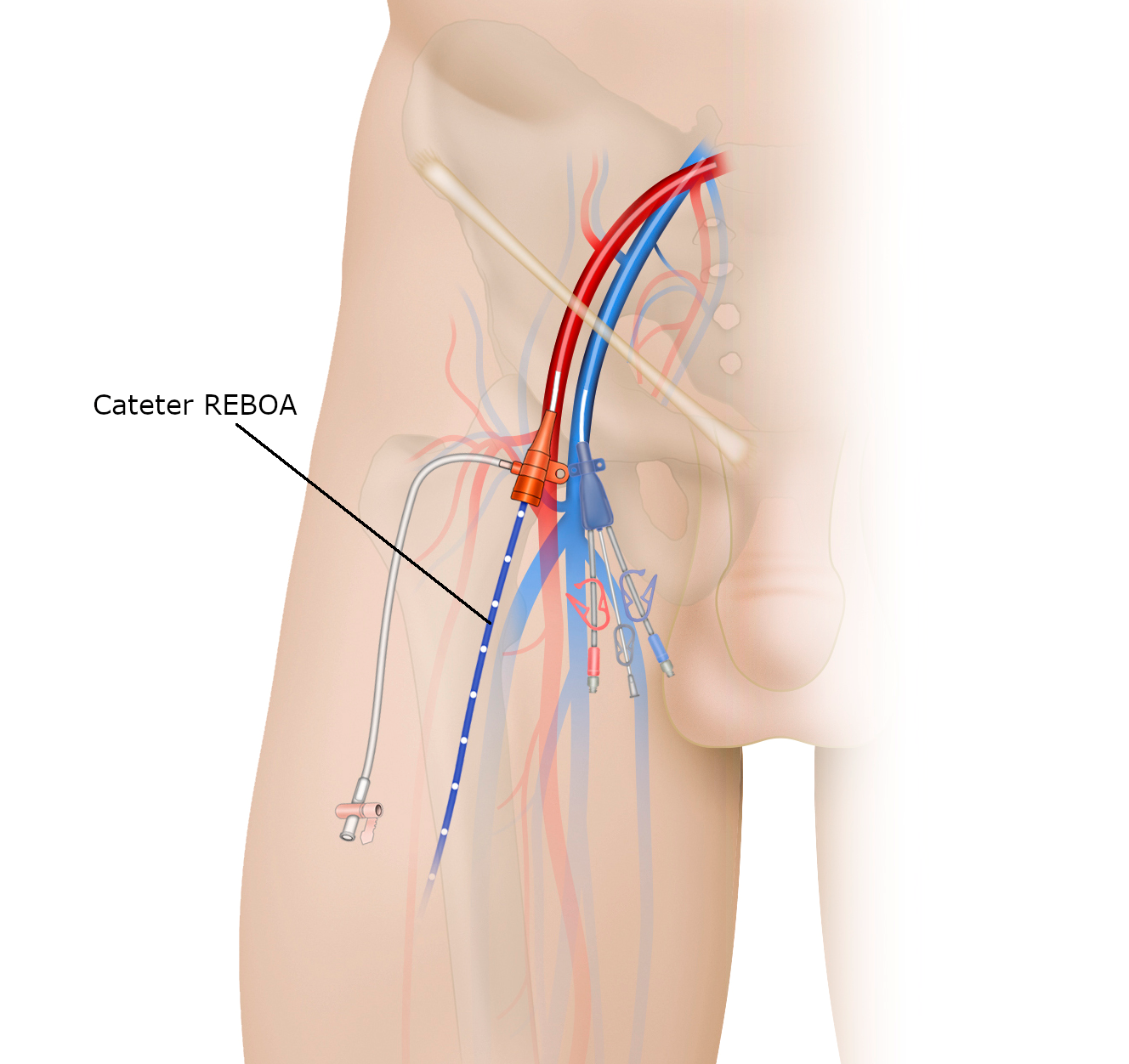Damage control in the emergency department, a bridge to life
Abstract
Patients with hemodynamic instability have a sustained systolic blood pressure less or equal to 90 mmHg, a heart rate greater or equal to 120 beats per minute and an acute compromise of the ventilation/oxygenation ratio and/or an altered state of consciousness upon admission. These patients have higher mortality rates due to massive hemorrhage, airway injury and/or impaired ventilation. Damage control resuscitation is a systematic approach that aims to limit physiologic deterioration through a group of strategies that address the physiologic debt of trauma. This article aims to describe the experience earned by the Trauma and Emergency Surgery Group (CTE) of Cali, Colombia in the management of the severely injured trauma patient in the emergency department following the basic principles of damage control surgery. Since bleeding is the main cause of death, the management of the severely injured trauma patient in the emergency department requires a multidisciplinary team, which should perform damage control maneuvers aimed at rapidly control bleeding, hemostatic resuscitation and/or prompt transfer to the operating room, if required.
Authors
Downloads
Keywords
- Hypothermia
- Cardiac Tamponade
- Hypocalcemia
- Emergency Service, Hospital
- Shock
- Hypotension
- Acidosis
- Intensive Care Units
- Balloon Occlusion
- Intubation, Intratracheal
- Airway Obstruction
References
Braz LG, Carlucci MTO, Braz JRC, Módolo NSP, do Nascimento P, Braz MG. Perioperative cardiac arrest and mortality in trauma patients: A systematic review of observational studies. J Clin Anesth [Internet]. 2020;64(January):109813. Available from: https://doi.org/10.1016/j.jclinane.2020.109813
Rotondo MF. "Damage control" an approach for improved survival in exsanguinating penetrating abdominal injury. J Trauma Acute Care Surg. 1993;35(3). https://doi.org/10.1097/00005373-199309000-00008
El Sayed MJ, Tamim H, Mailhac A, Mann NC. Trends and Predictors of Limb Tourniquet Use by Civilian Emergency Medical Services in the United States. Prehospital Emerg Care. 2017;21(1):54-62. https://doi.org/10.1080/10903127.2016.1227002
Costantini TW, Coimbra R, Holcomb JB, Podbielski JM, Catalano R, Blackburn A, et al. Current management of hemorrhage from severe pelvic fractures: Results of an American Association for the Surgery of Trauma multi-institutional trial. J Trauma Acute Care Surg. 2016;80(5):717-25. https://doi.org/10.1097/TA.0000000000001034
Lozano R, Naghavi M, Foreman K, Lim S, Shibuya K, Aboyans V, et al. Global and regional mortality from 235 causes of death for 20 age groups in 1990 and 2010: A systematic analysis for the Global Burden of Disease Study 2010. Lancet. 2012;380(9859):2095-128. https://doi.org/10.1016/S0140-6736(12)61728-0
Megevand B, Celi J, Niquille M. Hemorrhagic shock. Rev Med Suisse. 2014;10(438):1696-702.
Bjerkvig CK, Strandenes G, Eliassen HS, Spinella PC, Fosse TK, Cap AP, et al. "blood failure" time to view blood as an organ: How oxygen debt contributes to blood failure and its implications for remote damage control resuscitation. Transfusion. 2016;56(April):S182-9. https://doi.org/10.1111/trf.13500
Ditzel RM, Anderson JL, Eisenhart WJ, Rankin CJ, DeFeo DR, Oak S, et al. A review of transfusion- And trauma-induced hypocalcemia: Is it time to change the lethal triad to the lethal diamond? J Trauma Acute Care Surg. 2020;88(3):434-9. https://doi.org/10.1097/TA.0000000000002570
Management of the Major Coagulopathy with Onset during Lapar... : Annals of Surgery [Internet]. Available from: http://journals.lww.com/annalsofsurgery/Abstract/1983/05000/Management_of_the_Major_Coagulopathy_with_Onset.5.aspx
Johnson JW, Gracias VH, Schwab CW, Reilly PM, Kauder DR, Shapiro MB, et al. Evolution in damage control for exsanguinating penetrating abdominal injury. J Trauma. 2001;51(2):261-71. https://doi.org/10.1097/00005373-200108000-00007
Williams SR, Perera P, Gharahbaghian L. The FAST and E-FAST in 2013: Trauma Ultrasonography. Overview, practical techniques, controversies, and new frontiers. Crit Care Clin [Internet]. 2014;30(1):119-50. https://doi.org/10.1016/j.ccc.2013.08.005
Ordoñez CA, García C, Parra MW, Angamarca E, Guzmán-Rodríguez M, Orlas CP, et al. Implementation of a new single-pass whole-body computed tomography protocol: Is it safe, effective and efficient in patients with severe trauma? Colomb Med. 2020;51(1):1-10. https://doi.org/10.25100/cm.v51i1.4224
Holcomb JB, Fox EE, Wade CE. The PRospective observational multicenter major trauma transfusion (PROMMTT) study. J Trauma Acute Care Surg. 2013;75(1 SUPPL1):1-2. https://doi.org/10.1097/TA.0b013e3182983876
Galvagno SM, Nahmias JT, Young DA. Advanced Trauma Life Support® Update 2019: Management and Applications for Adults and Special Populations. Anesthesiol Clin. 2019;37(1):13-32. https://doi.org/10.1016/j.anclin.2018.09.009
Rubin IL. Acute Cor Pulmonale. Ann Intern Med. 1950;33(4). https://doi.org/10.7326/0003-4819-33-4-1013
Morrison JJ, Percival TJ, Markov NP, Villamaria C, Scott DJ, Saches KA, et al. Aortic balloon occlusion is effective in controlling pelvic hemorrhage. J Surg Res [Internet]. 2012;177(2):341-7. https://doi.org/10.1016/j.jss.2012.04.035
Meléndez JJ, Ordóñez CA, Parra MW, Orlas CP, Manzano-Núñez R, García AF, et al. Balón de reanimación endovascular de aorta para pacientes en riesgo de o en choque hemorrágico: experiencia en un centro de trauma de Latinoamérica. Rev Colomb Cirugía. 2019;34(2):124-31. https://doi.org/10.30944/20117582.106
Ordoñez CA, Parra MW, Manzano-Nunez R, Herrera-Escobar JP, Serna JJ, Rodriguez Ossa P, et al. Intraoperative combination of resuscitative endovascular balloon occlusion of the aorta and a median sternotomy in hemodynamically unstable patients with penetrating chest trauma: Is this feasible? J Trauma Acute Care Surg. 2018;84(5):752-7. https://doi.org/10.1097/TA.0000000000001807
Ordoñez CA, Rodríguez F, Orlas CP, Parra MW, Caicedo Y, Guzmán M, et al. The critical threshold value of systolic blood pressure for aortic occlusion in trauma patients in profound hemorrhagic shock. J Trauma Acute Care Surg 2020;89:1107-13. https://doi.org/10.1097/TA.0000000000002935.
Melendez JJ, Caicedo Y, Guzman M, Serna JJ, Ordoñez J, Angamarca E, et al. Prehospital Damage Control: The Management of Volume, Temperature…and Bleeding! Colomb Med 2020;51:2014486. https://doi.org/10.25100/cm.v51i4.4486.
Mejia DA, Parra M, Ordoñez CA, Padilla N, Caicedo Y, Pereira-Warr S, et al. Hemodynamically Unstable Pelvic Fracture: A Damage Control Surgical Algorithm that Fits your Reality. Colomb Med 2020;51. https://doi.org/10.25100/cm.v51i4.4510.
Ordoñez CA, Rodríguez F, Parra M, Herrera JP, Guzmán-Rodríguez M, Orlas C, et al. Resuscitative endovascular balloon of the aorta is feasible in penetrating chest trauma with major hemorrhage: Proposal of a new institutional deployment algorithm. J Trauma Acute Care Surg 2020;89:311-9. https://doi.org/10.1097/ta.0000000000002773.
Ordoñez CA, Parra M, Caicedo Y, Padilla N, Rodriguez F, Serna JJ, et al. REBOA as a New Damage Control Component in Hemodynamically Unstable NTCH patients. Colomb Med 2020. https://doi.org/10.25100/cm.v51i4.4506
Salamea JC, Himmler A, Valencia-Angel LI, Ordoñez CA, Parra M, Caicedo Y, et al. Whole Blood for Blood Loss: Hemostatic Resuscitation in Damage Control. Colomb Med 2020;16:2014511. https://doi.org/10.25100/cm.v51i4.4511

Copyright (c) 2021 Universidad del Valle

This work is licensed under a Creative Commons Attribution-NonCommercial 4.0 International License.
The copy rights of the articles published in Colombia Médica belong to the Universidad del Valle. The contents of the articles that appear in the Journal are exclusively the responsibility of the authors and do not necessarily reflect the opinions of the Editorial Committee of the Journal. It is allowed to reproduce the material published in Colombia Médica without prior authorization for non-commercial use

 https://orcid.org/0000-0001-8730-2447
https://orcid.org/0000-0001-8730-2447


















